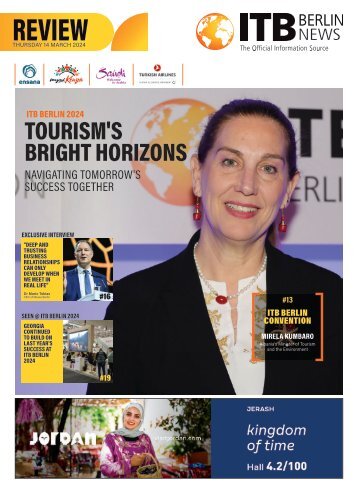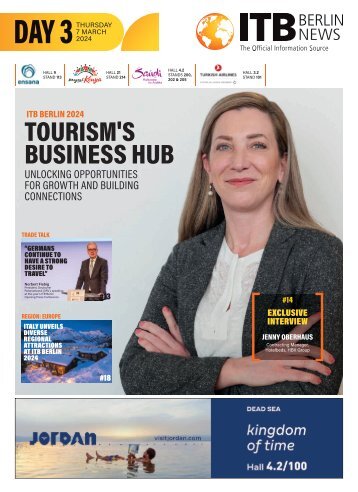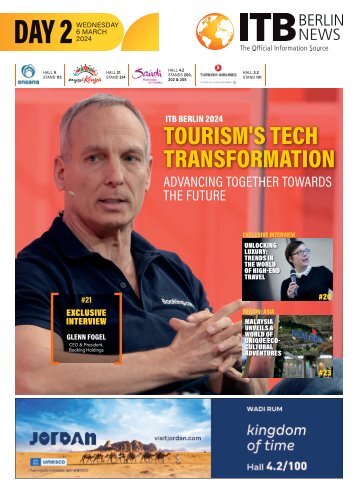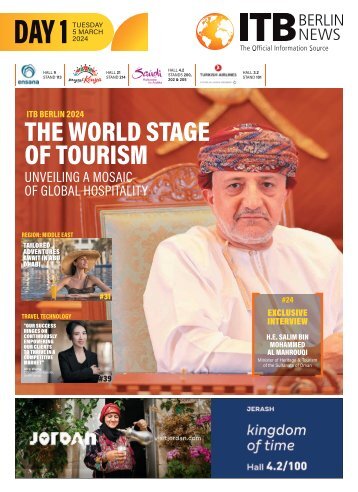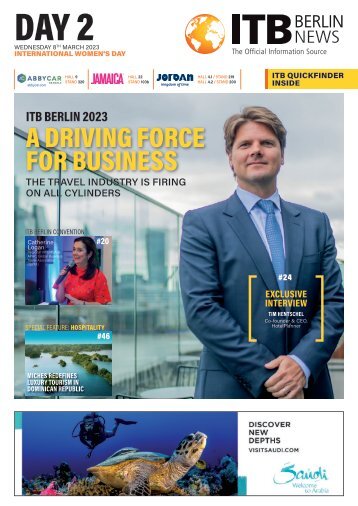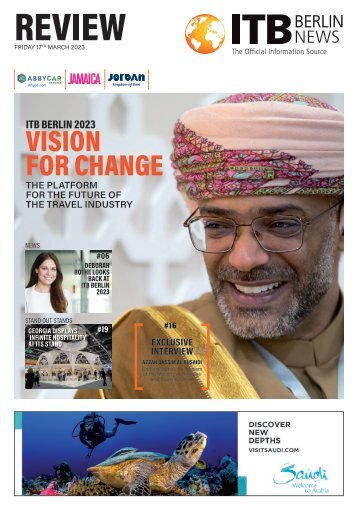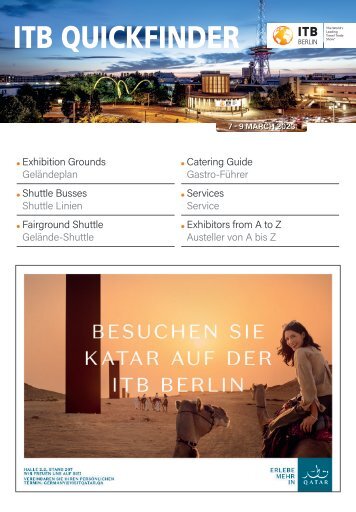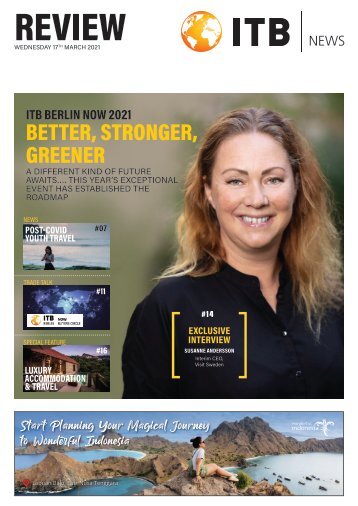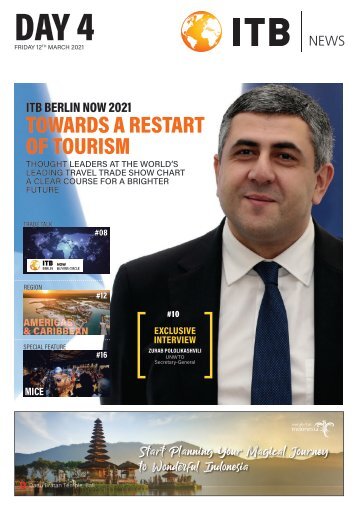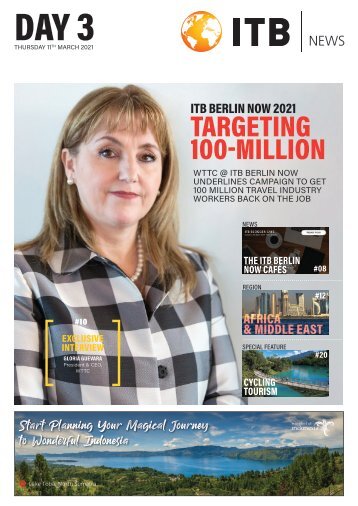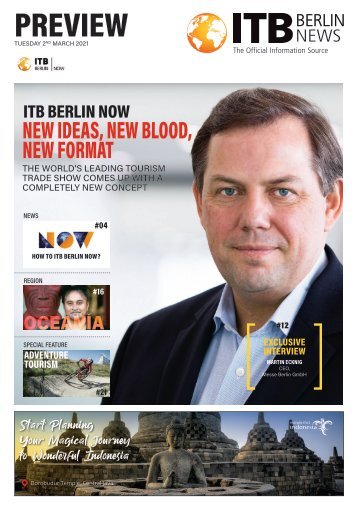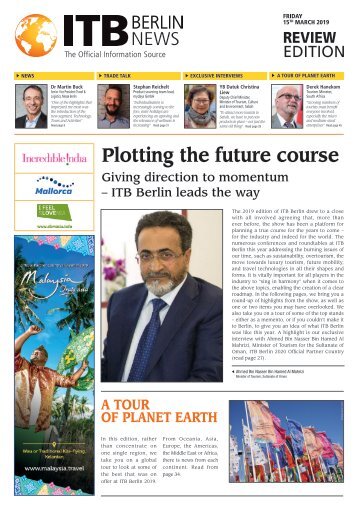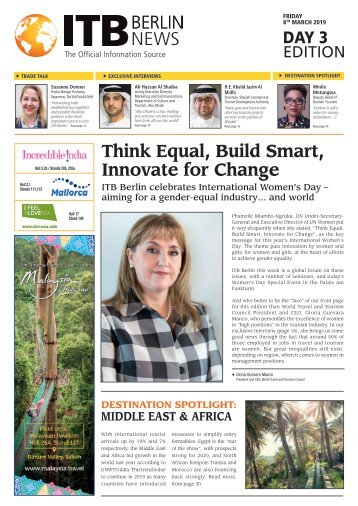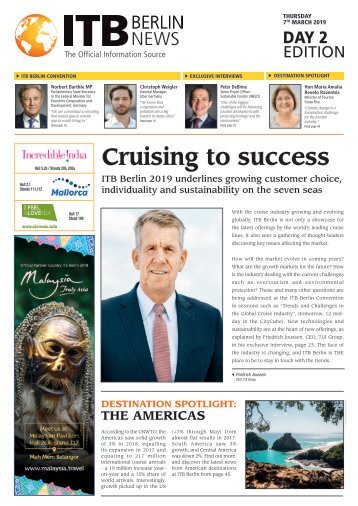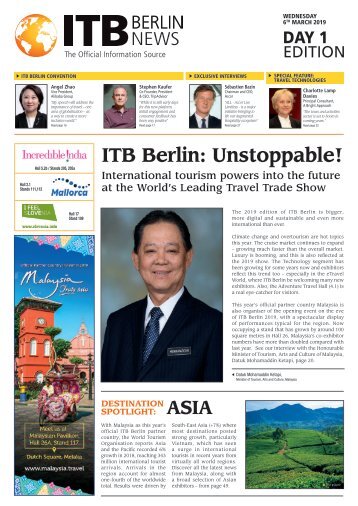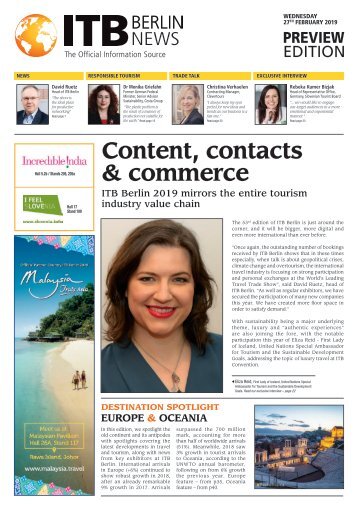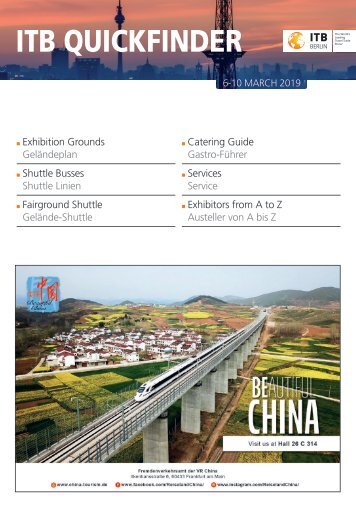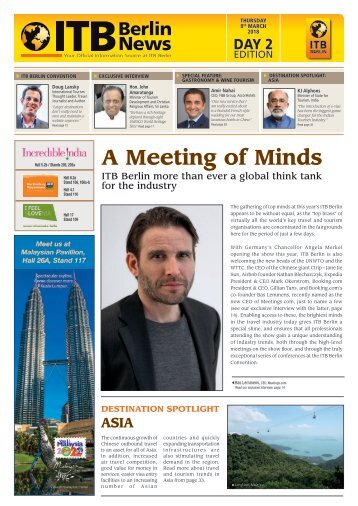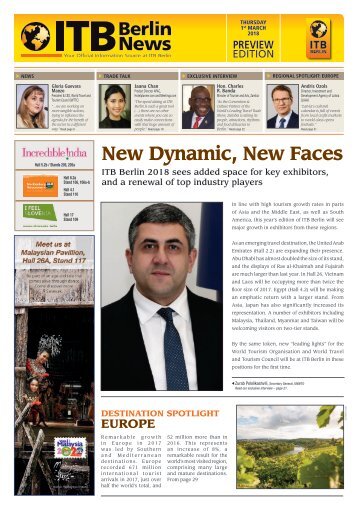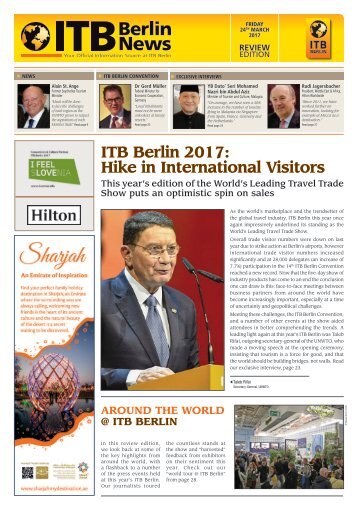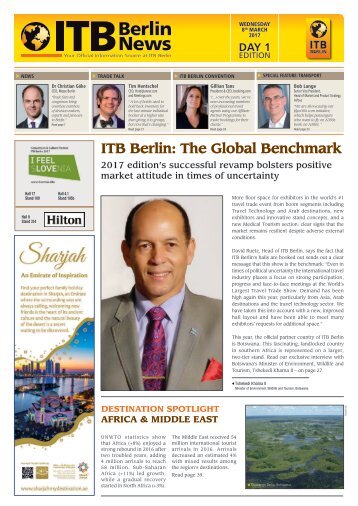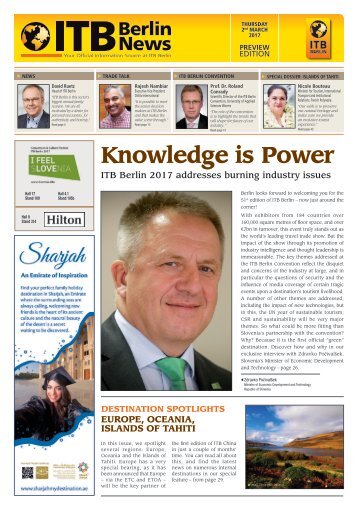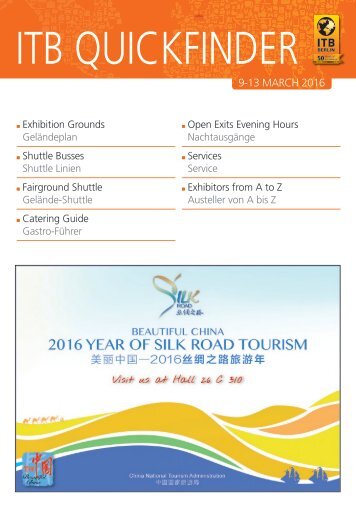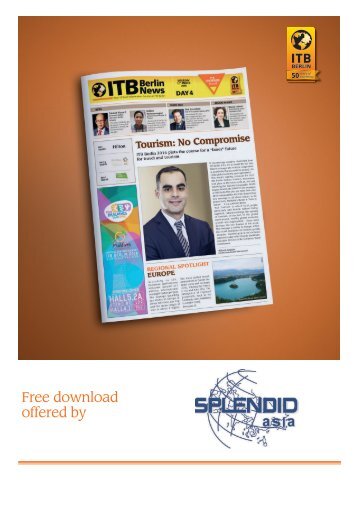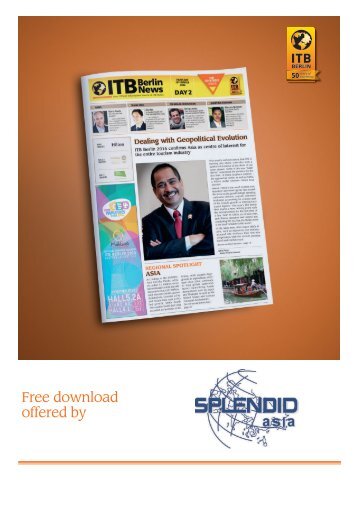
ITB Berlin News 2021 - Day 1 Edition
- Text
- Martinique
- Region
- Global
- Heritage
- European
- Destination
- Saxony
- Cultural
- Berlin
- Tourism
I REGION I EUROPE I LIKE
I REGION I EUROPE I LIKE MANY OTHER CITIES IN EUROPE, NEUCHÂTEL IN SWITZERLAND ENJOYED A RELATIVELY BUSY TOURIST SEASON IN SUMMER 2020 EUROPE ALBANIA AUSTRIA BELGIUM BOSNIA & HERZEGOVINA BULGARIA CROATIA CYPRUS CZECH REPUBLIC DENMARK ESTONIA FINLAND FRANCE GERMANY GREECE GUERNSEY HUNGARY ICELAND IRELAND ITALY JERSEY KOSOVO LATVIA LIECHTENSTEIN LITHUANIA LUXEMBOURG MACEDONIA MALTA MOLDOVA MONTENEGRO NETHERLANDS NORWAY POLAND PORTUGAL ROMANIA RUSSIAN FEDERATION SAN MARINO SERBIA SLOVAKIA SLOVENIA SPAIN SWEDEN SWITZERLAND TURKEY UKRAINE UNITED KINGDOM More resilience than the rest of the world in 2020 The European Union played a positive role in 2020 for European internal tourism as it fostered the reopening of all internal borders over the summer, helping Europe limit its decline In 2020, Europe saw total international arrivals declining by 70% according to preliminary UNWTO data. This should translate into a drop of 500 million from a total of 743 million international tourists in 2019 to 230 million last year. However, the market share of Europe increased from 51% to 58% of all total arrivals. This is due to the almost complete closure of borders in Asia/Pacific and North America. The weak result of European tourism is confirmed by the European Travel Commission (ETC). The organisation represents 33 countries in Europe - excluding France, Sweden and the UK. ETC confirms however that the reopening of borders during the summer had a positive impact on some destinations. Countries such as Austria, Greece, Italy and Spain benefited from a brief uptick in demand, although annual levels remained below 2019. However, the regular return of outbreaks with a worsening of the situation from November saw countries reimposing restrictions. As they have persisted into 2021, traveller confidence remains weak. According to Tourism Economics’ global travel forecasts published by the ETC, Western Europe was the best performer with overnight tourists down by 56.2% last year compared to 2019; Southern/ Mediterranean Europe was down by 72.1% and Central/Eastern Europe by -72.9%. Northern Europe performed worst as countries such as Denmark, Finland and Norway kept their borders closed for most of the year. MONACO, AUSTRIA AND LUXEMBURG PERFORMED BEST IN 2020 When looking at Europe's best performing countries in 2020, Monaco, Austria and Luxembourg managed to keep the decline of their international arrivals by respectively 51%, 52.7% and 53%. Italy recorded a relatively acceptable performance with total international arrivals down by "only" 56.4%. However, Iceland, Hungary, Malta, Portugal, Serbia and Spain saw their tourist numbers down by 75%. Long-haul travel to Europe was the most depressed in 2020. Visitors from Brazil, Canada, China, India or the USA were not allowed to come to the European Union last year. All overseas markets were down between 75% and 90% on average. The ETC is giving a glimmer of hope for 2021 linked to the approval and implementation of vaccination campaigns, which provide a much-needed boost to traveller confidence. A recent survey by ETC indicates that 45% of Europeans were planning to immediately reschedule their prepandemic trip once a Covid-19 vaccine had been found. The European Travel Commission expects international arrivals will exceed 2019 levels only by 2023 NEWS Non-EU countries recorded the worst performance on the continent last year according to the ETC. Total overnight arrivals were down by 76.3%; a result due to the fact that Russia kept its borders closed for most of the year. The latest ETC report “Monitoring Sentiment for Domestic and Intra- European Travel – Wave 5” highlights that 54% of Europeans aim to make a trip before the end of July 2021 while one in three Europeans believe that May-July is the most feasible period for their next trip. In the same report, the ETC indicates that 18% of Europeans would favour a sun and beach holiday, followed by a city break for 16% and a culture & heritage trip for 14%. 54% of people surveyed said they were willing to fly for their holiday while 36% would favour travel by car AUSTRIA RECORDED A DECREASED OF "ONLY" 52.7% OF ITS INTERNATIONAL ARRIVALS IN 2020 18 ITB BERLIN NEWS • TUESDAY 9 TH MARCH 2021 www.itb-berlin-news.com
I REGION I EUROPE I Rebranding Serbia as a prime tourist destination Exclusive Interview: Marija Labović, CEO, National Tourism Organisation, Serbia SLOW ADVENTURE AT ITB BERLIN NOW For Marija Labović, CEO, National Tourism Organisation, Serbia, city breaks in Belgrade and Novi Sad will continue to be key products for international visitors, once the pandemic is over. Serbia is convinced that most tourists are now seeking natural uncrowded destinations. Promotion at ITB Berlin NOW 2021 is thus all about slow adventure. The new concept serves as an antidote to people's urban life. Slow adventure encourages tourists to experience outdoors at a slower pace and to engage with remote and wild places, with the appreciation of the environment, local food, culture, history and traditions Last year was very difficult for the global tourism industry, including of course for Serbia. But just how did they weather through? We put the question to Marija Labović, CEO, National Tourism Organisation, Serbia. International tourism suffered the most, with overnights down 78% in 2020. We expect 2021 to be difficult again. Although vaccinations bring light at the end of the tunnel, it seems that this light will not come as quickly as hoped. In the meantime, we worked hard on strengthening our tourism marketing with the adoption of our Tourism Strategy until 2025. We are rebranding Serbia as a tourist destination and are formulating our strategy for 2022 and beyond. Did you change the way to promote Serbia? What are your main markets ? With the current situation, we will have to focus further for the near future on domestic and regional markets, while keeping a "soft" presence on other markets. We will shift our activities to almost only digital promotion and marketing at least in 2021. Traditional key markets for Serbia are neighbouring countries- former Yugoslav countries, Bulgaria, Romania and Turkey. China was our number one overseas market in 2019, while Russia and Germany remained strong. What kind of products are you presenting in 2021? How are you adapting them to a demand for more sustainability and more health safety? In 2021, we will focus on nature-linked holidays. We will put more promotional efforts to bring tourists in a sustainable way to our protected natural areas like national parks. We want to promote rural accommodation with succulent Serbian food as well as slow adventure activities like hiking and biking, for travellers to familiarise themselves with Serbian culture and history. This includes remote medieval monasteries and fortresses, art galleries, traditional arts and craft producers. Of course, we are also improving tourism infrastructure, such as new 4 and 5 star hotels in cities, or ski infrastructure in winter resorts such as Kopaonik and Zlatibor. Since the culture is a very important promotion tool, we will of course put great emphasis on Novi Sad as European Capital of Culture 2022 FOCUSING ON NEW MARKETS IN 2022 Besides former Yugoslav Republics, Russia, or Germany, Serbia's tourist authorities are aiming in 2022 to become more active in European markets, offering an interesting development potential. Among them are Italy, France, the UK, Benelux, Scandinavia and the USA. Most of them generated total arrivals ranging between 30,000 and 50,000 in 2019. China was by far the largest market in 2019 with close to 145,000 arrivals. "We will focus more on positioning in these important markets from 2022 onwards when we expect the pandemic to be behind us", explains Marija Labović VISIT BR AND CARD ITB BERLIN NEWS • TUESDAY 9 TH MARCH 2021 19
- Page 1 and 2: DAY 1 TUESDAY 9 TH MARCH 2021 ITB B
- Page 3 and 4: EDITORIAL Richard Barnes Editor-in-
- Page 5 and 6: ADVERTORIAL I NEWS I Tegudon Touris
- Page 7 and 8: I NEWS I ADVERTORIAL François Balt
- Page 9 and 10: I TRADE TALK I Peter Strub COO Stud
- Page 11 and 12: I EXCLUSIVE INTERVIEW I Italy conti
- Page 13 and 14: I EXCLUSIVE INTERVIEW I © Erik-Gro
- Page 15 and 16: ADVERTORIAL I REGION I SAXONY I SAX
- Page 17: ADVERTORIAL I REGION I SAXONY I “
- Page 21 and 22: I REGION I EUROPE I © Andrius Alek
- Page 23 and 24: I SPECIAL FEATURE I TRANSPORT I ©
- Page 25 and 26: I SPECIAL FEATURE I TRAVEL TECHNOLO
- Page 27 and 28: ADVERTORIAL I SPECIAL FEATURE I CUL
- Page 29 and 30: Convention THE HOSPITALITY INDUSTRY
Inappropriate
Loading...
Mail this publication
Loading...
Embed
Loading...
